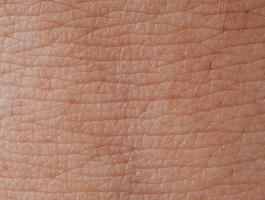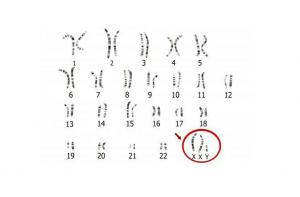Frank-Starling's law: what it is and what does it explain about the heart
The heart, together with the brain and the lungs, forms the triangle of physiological essentiality in living beings. This small organ (which is equivalent to 0.4% of the body weight of an adult person) pumps about 70 milliliters of blood with each heartbeat, that is, approximately 5 liters of fluid per minute.
Taking into account that a human being has 4.5 to 6 liters of blood throughout his body, we can affirm that the heart pumps practically all of this liquid in an interval of 60 seconds.
This work is not free: a heart can burn between 0.9 and 1.2 kilocalories per kilo of weight of the individual per hour, which translates into 400-600 calories a day. Much of our basal metabolism (energy necessary to live at rest) is explained by the action of this organ and brain, since they are in continuous operation and represent a true factory of consumption of resources.
We could spend hours and hours collecting curious data about the human heart, because really, it gives us the possibility of existing and largely defines us as a species. Anyway, today we want to spin a little finer, go into more complex and specific terms: stay with us if you want to know everything about
Frank-Starling's law.- Related article: "The 13 parts of the human heart (and their functions)"
The functioning of the heart
First of all, we must cement a series of basal mechanisms when it comes to blood flow. The human heart is a hollow muscular organ with 4 chambers (2 atria and 2 ventricles) septate, that is, they are completely separated. Making this distinction is essential, as other non-human vertebrates have hearts with septa partial or without them, so there is a certain degree of mixing between oxygenated and deoxygenated blood. In our species, this is not the case.
The heart pumps blood to all parts of the body, but there is a clear distinction between which carries oxygen after passing through the lungs (oxygenated) and that which returns to them to collect O2 (deoxygenated). The Centers for Disease Control and Prevention (CDC) give us a general idea of blood pumping in the following list:
- The superior vena cava (SVC) and the inferior vena cava (IVC) are the two main conduits that allow the return of deoxygenated blood to the heart.
- This deoxygenated blood enters the heart through the right atrium (RA), which subsequently communicates the blood to the right ventricle (RV).
- The right ventricle pumps blood to the pulmonary arteries, which branch into small capillaries, located in the alveoli of the lung.
- Human respiration enables carbon dioxide in the blood to be exchanged at the capillary level for oxygen.
- In summary, blood returns to the heart through the left atrium (LA), flows to the ventricle left (VI) and this pumps blood to the aorta artery, which distributes oxygenated blood through the Body.
This cycle only describes the oxygenation and deoxygenation of the blood, because you should not forget that the blood passes through the liver, kidneys and other organs to purify itself and deposit substances. To be sure, describing the circulatory system is a mammoth task worthy of several volumes of an encyclopedia.
How does Frank-Starling's law apply to everything described?
Frank-Starling's law It was described from the names of 2 researchers specialized in physiology: Otto Frank and Ernest Henry Starling, both professionals in the field of twentieth century anatomy. In any case, these were not the first to postulate and suspect certain of the correlations that we show you below.
Simply put, Frank-Starling's law states that the heart has an intrinsic ability to respond to increasing volumes of blood flow. Based on this premise, it is expected that cardiac output (volume of blood expelled by the ventricle within a minute) increase or decrease in response to changes in heart rate and volume systolic.
Let's take an example: when a person gets up from his seat, the cardiac output decreases, since the decrease in the central venous pressure (CVP) is translates into a drop in stroke volume (remember, it is the volume of blood that the heart expels into the aorta or pulmonary artery in its contraction).
In summary, central venous pressure is important in this case, as it defines the filling pressure of the right ventricle and, therefore, directly determines the stroke volume of blood ejection. We know that this terminology can seem quite confusing, but surely the formulas help you understand the law described here a little better.
The Basics of Frank-Sterling's Law
Cardiac work (D): stroke volume (SV) x heart rate (HR)
We remember that cardiac work or output (D) refers to the amount of blood that a ventricle expels from the heart in 60 seconds. On the other hand, the stroke volume (SV) exemplifies the blood volume that the heart expels into the aorta or pulmonary artery. Lastly, heart rate (HR) is a parameter that reflects the number of beats per unit of time.
If we take into account that (in a normal situation) a person has a stroke volume of 60 milliliters per beat at the rate of a heart rate of 75 beats per minute, we obtain that the total cardiac work per minute is 4.5 liters, the figure that we have shown you when opening this space.
Based on this premise, Frank-Sterling's law explains that, as the heart is filled with a greater volume of blood, the force of the contraction will increase significantly. In other words, if a person makes a muscular effort at a given moment, he will increase the volume of blood returned by the venous system, so the stroke volume (the force of contraction of the heart) will be higher. Thus, this complex mechanism is understood a little better; Truth?
- You may be interested in: "Circulatory system: what is it, parts and characteristics"
The law and anatomy of the heart
This theory is not only mathematically based, but has to present a physiological explanation that justifies the postulate. Frank-Sterling's law is based on the following premise: there is a relationship between the initial length of the myocardial fibers (forming the heart muscle) and the force generated by the contraction of the heart.
The increase in blood flow in the venous return translates into a greater filling of the ventricle, since this is in charge of collecting the blood in the heart. This promotes the stretching of the myocardial fibers of the organ, which results in an increase in the length of the sarcomeres (muscle units resulting from the set of fibers). With an increase in sarcomeric length, a greater generation of force is possible during contraction, so that the heart is able to eject more blood into the arteries (stroke volume).
In general, all of this can be summed up in one easy-to-understand idea: if the ventricular chamber fills more with blood, the muscle fibers lengthen and tighten more, which promotes the release of a more drastic force to eject excess blood that has reached the heart through the veins into the arteries. Perhaps sinning as reductionists, it could be summarized as a "rubber effect": the more something is stretched by external pressure, the greater the force with which it returns to its natural shape.
Resume
In summary, the normal ventricle of a human with a "healthy" heart is capable of increasing stroke volume when more blood reaches it, in order to expel excess fluid in the chamber. Unfortunately, this does not have to apply to people with cardiovascular problems, so several clinical events can be generated in response to “non-compliance” with this law.
In any case, it should be noted that there is no Frank-Sterling “curve” (which can be generated from what is presented) applicable in each and every one of the cases. The ventricle takes different shapes on the curve, depending on the state of the heart and the nature of the afterload period. If something is clear to us after walking these lines, it is that the heart is a much more intricate organ than it might seem.
Bibliographic references:
- How does the heart work? Centers for Disease Control and Prevention (CDC). Picked up on March 11 at https://www.cdc.gov/ncbddd/spanish/heartdefects/howtheheartworks.html#:~:text=El%20flujo%20de%20sangre%20a%20trav%C3%A9s%20del%20coraz%C3%B3n&text=La%20sangre%20suministra%20ox%C3%ADgeno%20y, % 20se% 20 blood becomes% 20 deoxygenated.
- Frank-Sterling Mechanism. Cardiovascular Physiology Concepts. Picked up on March 11 at https://www.cvphysiology.com/Cardiac%20Function/CF003
- Saks, V., Dzeja, P., Schlattner, U., Vendelin, M., Terzic, A., & Wallimann, T. (2006). Cardiac system bioenergetics: metabolic basis of the Frank-Starling law. The Journal of physiology, 571 (2), 253-273.
- Sequeira, V., & van der Velden, J. (2015). Historical perspective on heart function: the Frank – Starling Law. Biophysical Reviews, 7 (4), 421-447.
- Solaro, R. J. (2007). Mechanisms of the Frank-Starling law of the heart: the beat goes on. Biophysical journal, 93 (12), 4095.


